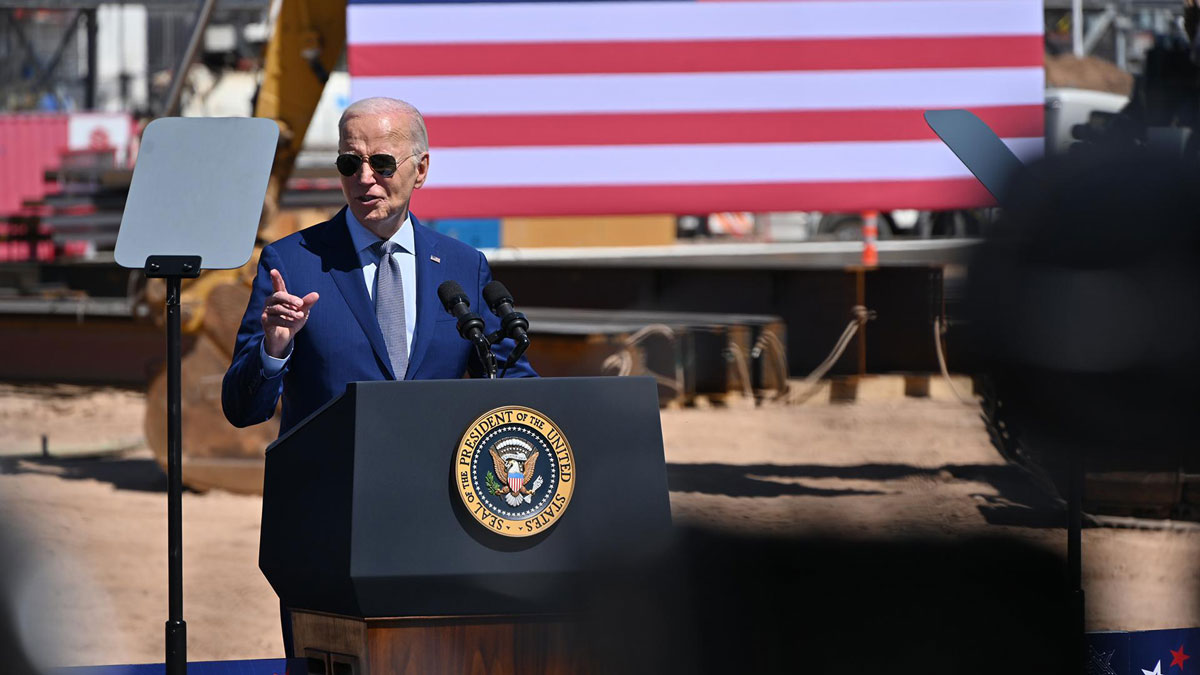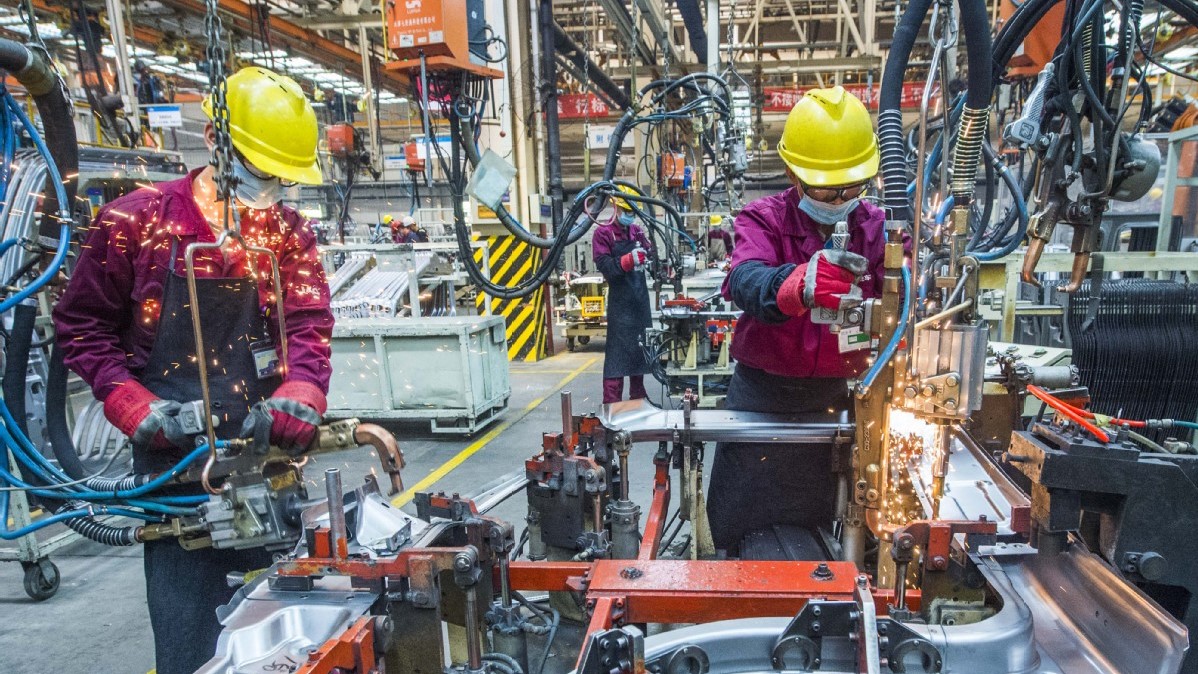Published 26 March 2024
After a long dormant period, industrial policy is back and dramatically reshaping global manufacturing. As large-scale subsidies proliferate, countries that used to take a laissez-faire approach to market governance have entered a race to subsidize strategic sectors. Companies are responding.
After a long dormant period since the Washington Consensus of the 1980s, industrial policy is back and dramatically reshaping global manufacturing. As large-scale subsidies policies proliferate, countries that used to take a laissez-faire approach to market governance have entered a race to subsidize strategic sectors. Companies are responding, and international competition to attract and retain key industrial and manufacturing capabilities is showing no signs of abating.
In response to China subsidies, President Biden’s Inflation Reduction Act (IRA) and the CHIPS and Science Act (CHIPS) amplified and implemented subsidies so attractive that Volkswagen likened them to "a gold rush" when the German car maker decided to build a US$2 billion electric vehicle (EV) factory in South Carolina.1
Under the guise of investments to fight climate change, lower healthcare costs, and collect higher tax revenue, the IRA includes enormous subsidies in the form of tax incentives, grants, and loan guarantees to bolster manufacturing in the US. Though some of the subsidies, notably those around EV batteries, are available to investments in countries with which the US has a Free Trade Agreement, their scope and value are far lower than those available for companies committing to manufacturing in the US. Similarly, the CHIPS Act is intended to subsidize a renaissance in the US semiconductor industry and to reduce its exposure to Taiwan in the event of a crisis there. The IRA alone was originally estimated to cost US$385 billion but analysts have estimated that it will eventually cost US$1.2 trillion.2
Underpinning the drive to bring manufacturing back to the US is a desire to reduce America’s reliance on China for the increasingly broad range of sectors that are deemed to be relevant to national security. This includes clean energy technologies like batteries and EVs, as well as semiconductors and their critical inputs, though this list may expand.
Chinese subsidies in these and other strategic sectors have been incredibly successful at developing world-beating industries to support self-sufficiency. The Chinese government’s embrace of subsidies began to focus on high-tech industries in the 1980s, accelerating with support first for heavy industry, then semiconductors. The 2015 introduction of the Made in China 2025 plan was a major new driver behind China’s current domination of sectors ranging from artificial intelligence and semiconductors to EVs. This policy has been continued through Beijing’s two most recent Five-Year Plans, which have funded the rapid growth of Chinese industries.
The magnetic pull of the IRA’s incentives to the US has been immense. Tax credits for up to US$7,500 per vehicle have created a surge of inbound investment in US manufacturing of EVs and their batteries. In the first 12-months since the IRA was implemented, the private sector has announced more than US$110 billion in new clean energy manufacturing investments, including more than US$70 billion in the EV supply chain.3 With a tax credit that could shave the cost of battery production by between 35-42%, the economics of battery and EV manufacturing have been upended to such an extent that traditional car manufacturing nations have been forced to respond with their own subsidy programs.4
Similarly, incentives available under the CHIPS Act have pulled advanced semiconductor manufacturers back to the US or encouraged them to enter for the first time. Intel, Taiwan Semiconductor Manufacturing Corporation (TSMC), and Samsung are all in line to receive billions of dollars in funding under CHIPS to establish advanced semiconductor fabs in the US.5 A network of other suppliers in the semiconductor supply chain, like R&D labs and advanced chemical manufacturers, have also been established in the US as part of CHIPS.6
The effect of the incentives on American supply chains has been dramatic. Mexico replaced China as the top exporter to the US in 2023, the first time since 2006 the Asian nation was not the largest. In 2023, US tariffs on Chinese goods, combined with the pull of subsidies from the US, drove manufacturing investment to Mexico – a US FTA partner and therefore a beneficiary of the IRA.7
The European Response
Even US allies have been forced to respond, as the scale and breadth of the subsidies offered cuts into their relative competitiveness and risks making their industries collateral damage.
The EU expressed almost immediate concern over the IRA, with protests focused on the domestic production provisions. European Commission President Ursula von der Leyen’s response has been to call for the establishment of an EU Sovereignty Fund (ESF) to directly counter the effects of the IRA.8
Along with defending itself from the IRA, the EU is concerned about China. According to the IMF, if China introduces a subsidy, there is a 90% likelihood that the EU responds with a trade restriction within 12 months. In announcing the ESF, von der Leyen said that the EU needs to consider "how our so-called 'like-minded partners' are ramping up in the industrial and technological race that is taking place".9 Her solution to the major US subsidies is for the EU to "show more assertiveness – including the necessary financing – to defend our European strategic interests."10
The ESF is one of several significant initiatives like the Green Deal Industrial Plan, the REPowerEU and the €800 billion NextGenerationEU policy which are aimed at subsidising green manufacturing in the bloc. Though the ESF has struck political difficulties, the European Commission’s intention to directly respond to IRA subsidies with subsidies of its own, is clear.
This has not been easy. The EU has had to overcome its traditional emphasis on free trade and has introduced new regulations that ease restrictions on state aid - strict rules which limit government subsidies for industry. For the first time, national governments of EU members states can match subsidies on offer outside the EU if there is a risk that a project of “strategic importance” is likely to be taken elsewhere.
The EU’s efforts have already begun to bear fruit. Swedish EV battery manufacturer Northvolt had threatened to pull out of plans for a new plant in Heide, Germany, citing more generous subsidies available to manufacturing in US under the IRA. But the German Government pledged in January 2024 a €902 million package, including a €700 million grant.11 Berlin was only able to do this after the European Commission approved the subsidies under the new state aid regime.
Germany has also announced it will provide €9.9 billion to finance one-third of a new Intel plant in Magdeburg. France has been even more explicit in its response to the new flexibility from the EU, with President Macron announcing that “we are the first in Europe to adapt what the European rule book allows us to do” and is introducing a green tax credit that emulates the IRA.12
EU Economy Commissioner Paolo Gentiloni has said “the pull factor of the IRA is increasing” and therefore the EU can be expected to continue its focus on implementing subsidies in response.13 However, national policies like Germany’s debt brake and the EU’s bureaucratic struggles to actually spend allocated funding, will hamper the European response.
Chinese business as usual
Unlike Europe, China has not responded to the IRA with new subsidies. China’s Commerce Minister Wang Wentao has gone so far as to tell reporters in Beijing that “rising trade protectionism” and “intensified geopolitical conflicts” were major concerns for China.14
This is, however, hypocritical. China has not implemented specific new subsidies in strategic sectors as they have been a key feature of China’s economic development for since the 1980s. US subsidy policies can be understood as a response to the long history of Chinese policies drawing manufacturing away from the US.
President Emeritus of the EU Chamber of Commerce in China Joerg Wuttke has commented that ten or 20 years ago, Europe and the US "thought if we are dealing with China, China will become more like us. But China managed to actually make us more like them."15
In common with the IRA, China’s biggest focus for subsidies is currently on electric vehicles, solar energy products, and lithium-ion batteries. Chinese subsidies have been broader in scope than those of Western nations. The 2018 prospectus of Chinese EV company Nio points not only to subsidies for customers, which are common in the US, EU and elsewhere, but also subsidies for product development, production facilities, R&D, asset acquisitions, and low-interest government loans.16 At their peak, one Chinese EV attracted up to US$19,000 of consumer purchase subsidies, in addition to tax breaks, cheap land, energy and bank credits for manufacturers.17 In total, the Center for Strategic and International Studies, a Washington think tank, estimates that Beijing spent more than US$125 billion on its EV sector between 2009-2021.18
There are no signs that China will abandon its policy of subsidizing strategic sectors.
South Korea and Japan
With significant domestic manufacturing industries in areas targeted by the IRA and CHIPS, South Korea and Japan have implemented their own subsidy response.
Despite initially describing the incentives for American-made EVs and batteries as a "betrayal", South Korean batteries and EVs have subsequently benefitted from updated guidance on the IRA from the US Treasury which will allow them to qualify for some tax incentives.19
Japan too stands to gain from the IRA, with a similar deal that qualifies Japanese EV batteries and components for IRA incentives.20
Major battery and semiconductor companies from both countries are planning major new factories in the US to ensure they continue receiving US subsidies as local content requirements under the IRA become stricter over time.
However, both the South Koreans and the Japanese have recognised that US subsidies also pose a threat to their own domestic industries. Both are pursuing a dual-track strategy that embraces incentives available under the IRA, whilst implementing their own domestic subsidy policies to protect key sectors.
South Korean President Yoon Suk Yeol has announced a plan to support a US$477 billion public-private investment in the semiconductor sector there, as well as additional billions for EV, electronic displays, robots, and biotech.21 President Yoon has commented "each country is sparing nothing in large-scale subsidies and tax benefits to build cutting-edge manufacturing facilities at home."22
Similarly, Japan’s battery industry has become a national priority, with the government announcing a raft of subsidies. In April 2023, the Japanese Government announced a 160-billion-yen grant to the alliance of Honda and battery maker GS Yuasa to build a lithium-ion battery plant in Shiga prefecture. In June, the government said it would give Toyota and Panasonic's joint battery venture, Prime Planet Energy & Solutions, 120 billion yen from the state budget.
Even Australia, which has an FTA with the US and little manufacturing to protect, has moved to enact an AU$15 billion subsidy program that seeks to bolster areas like batteries and critical minerals processing that are deemed to be strategically significant.23
There are no signs of slowing in the proliferation of subsidy programs. The current situation is almost a tit-for-tat subsidy race, where generous incentives become increasingly necessary to retain and attract businesses in areas identified as being strategic for each country.
There is a risk of countries, particularly the US and China, adopting increasingly broad definitions of what constitutes a strategic sector. Should this occur, a new wave of global subsidy programs is a very real risk.
***
[1] https://www.bloomberg.com/news/articles/2023-04-27/biden-s-made-in-america-push-unnerves-us-economic-allies?sref=K9oHjgnZ
[2] https://www.goldmansachs.com/intelligence/pages/the-us-is-poised-for-an-energy-revolution.html
[3] https://www.whitehouse.gov/briefing-room/statements-releases/2023/08/16/fact-sheet-one-year-in-president-bidens-inflation-reduction-act-is-driving-historic-climate-action-and-investing-in-america-to-create-good-paying-jobs-and-reduce-costs/
[4] https://www.goldmansachs.com/intelligence/pages/the-us-is-poised-for-an-energy-revolution.html
[5] https://www.wsj.com/politics/policy/eager-for-economic-wins-biden-to-announce-billions-for-advanced-chips-7e341e30
[6] https://newsroom.ibm.com/IBM-CEO-Statement-on-Landmark-U-S-Semiconductor-Funding-in-New-York-State
[7] https://www.census.gov/foreign-trade/statistics/highlights/topcm.html
[8] https://ec.europa.eu/commission/presscorner/detail/cs/STATEMENT_22_5543
[9] https://ec.europa.eu/commission/presscorner/detail/cs/STATEMENT_22_5543
[10] https://ec.europa.eu/commission/presscorner/detail/cs/STATEMENT_22_5543
[11] https://www.ft.com/content/36d4d041-8b57-4018-b9c1-729c0c71f3e2?segmentId=3f81fe28-ba5d-8a93-616e-4859191fabd8
[12] https://www.fdiintelligence.com/content/locations/global/asia-pacific/india/fdi-round-up-macron-unveils-france-s-ira-response-microsoft-enters-world-s-first-fusion-ppa-hyundai-bets-2.4bn-on-india-82481
[13] https://www.ft.com/content/67d905e2-7a68-4f96-8312-862ea71eb18a
[14] https://www.ft.com/content/a5101a0d-a1bf-4591-82f1-4fd9a5fadbec
[15] https://www.ft.com/content/a5101a0d-a1bf-4591-82f1-4fd9a5fadbec
[16] https://www.nytimes.com/2023/10/05/business/nio-china-electric-vehicles.html
[17] https://www.ft.com/content/608c4b00-8efb-4322-9318-f6249096e3fe
[18] https://www.csis.org/analysis/electric-shock-interpreting-chinas-electric-vehicle-export-boom
[19] https://keia.org/the-peninsula/2023-in-review-korea-and-the-inflation-reduction-act/
[20] https://www.ft.com/content/c8532c5e-abf2-4fba-9cc6-69a9726b3473
[21] https://www.bloomberg.com/news/articles/2024-01-15/south-korea-lays-out-470-billion-plan-to-build-chipmaking-hub?sref=K9oHjgnZ
[22] https://www.bloomberg.com/news/articles/2023-03-15/samsung-drives-400-billion-south-korea-plan-to-propel-key-tech?sref=K9oHjgnZ
[23] https://www.nrf.gov.au/
© The Hinrich Foundation. See our website Terms and conditions for our copyright and reprint policy. All statements of fact and the views, conclusions and recommendations expressed in this publication are the sole responsibility of the author(s).





